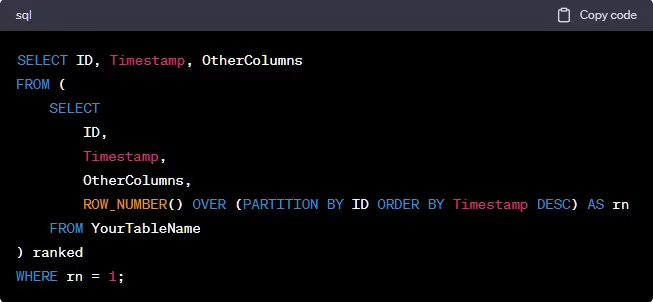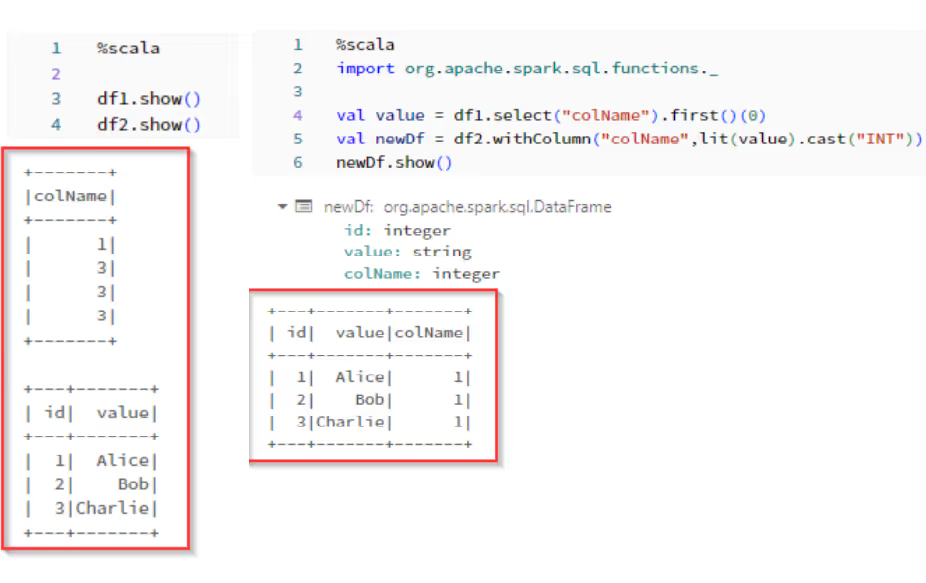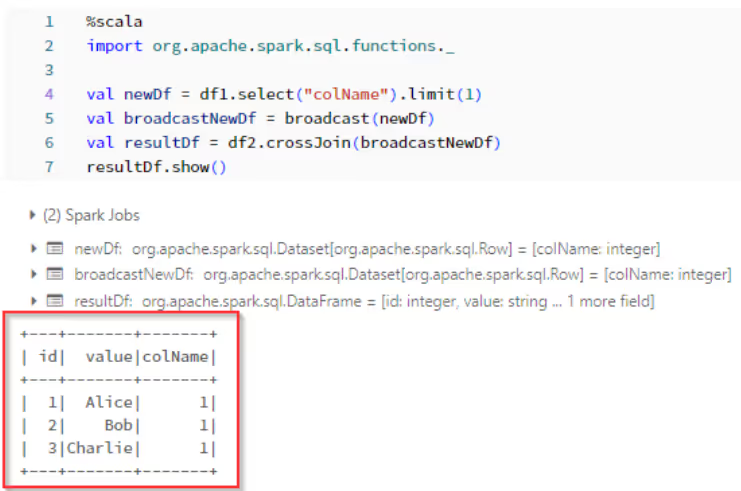Introduction
In the ever-evolving landscape of technology, encountering technical problems is inevitable. Whether you're a seasoned developer or a tech-savvy enthusiast, there will come a time when you need assistance to overcome a coding problem or resolve a software glitch. Two invaluable resources at your disposal for seeking help are OpenAI ChatGPT and Stack Overflow.
In this blog post, we will explore the similarities and differences between these two platforms, drawing on three real-world use cases to illustrate their effectiveness in solving technical challenges. These use cases will shed light on how ChatGPT and Stack Overflow perform in different scenarios, helping you decide which one is better suited for your specific technical problem-solving needs.
ChatGPT: Your AI-Powered Problem-Solving Companion
Real-Time Conversations
ChatGPT offers the advantage of real-time natural language conversations. It excels at understanding and generating human-like text, making it an ideal choice for those who prefer interactive problem-solving.
Versatility
One of ChatGPT's key strengths is its versatility. It can help with a wide range of technical issues, from programming questions to troubleshooting hardware problems.
Accessibility
ChatGPT is accessible through web browsers or integrated into various applications and platforms, making it easy to access when you need help, even on the go.
OpenAI Playground - free to use ChatGPT:
The OpenAI Playground is a web-based interface that allows you to experiment with ChatGPT for free. You can access it free of charge and engage in conversations with the model. However, there may be some limitations on usage (e.g. it uses data from before September 2021), and it's primarily designed for exploration and experimentation.
Stack Overflow: The Crowd-Powered Knowledge Hub
Vast Repository of Information
Stack Overflow provides an extensive collection of questions and answers on a wide array of technical topics. Chances are that if you have a software engineering question, the SO community has already answered it.
Community-Driven
Stack Overflow thrives on its vibrant community of developers and tech enthusiasts who contribute answers and upvote the most helpful ones.
Structured Q&A Format
Stack Overflow follows a structured question-and-answer format, which helps in finding relevant information quickly. Each question is tagged with specific topics, making it easier to locate solutions related to your problem.
Navigating Technical Quagmires across Three Use Cases
Use Case 1: Asking for help with writing an SQL query
Description:
We have a table in a database that has rows inserted without updating old rows, which leads to having records with the same ID but different timestamps. We could use some help in writing an SQL query that uses the window function to read rows with distinct IDs and the most recent timestamps.
How ChatGPT Helped?
ChatGPT suggests using a window function ROW_NUMBER() to assign a ranking to each row within a partition (group) of distinct IDs based on their timestamps. Then it tells us to filter out only the rows with the highest ranking (i.e., the most recent timestamp) for each ID. ChatGPT additionally provides us a ready-to-use SQL query to achieve this:

It also gives us instructions on how to use this sample query - replace YourTableName with the actual name of your table, and adjust Timestamp and OtherColumns to match your table's column names. Finally, ChatGPT explains how the query works - it first assigns row numbers to each row within the partition of each distinct ID, ordered by Timestamp in descending order. Then it selects only the rows where the row number is 1, effectively selecting the most recent row for each ID. The answer ends with a warning that the specific syntax might vary slightly depending on the database system you're using, but the overall structure of the query should remain the same.
How Stack Overflow Helped?
After a few minutes we get an answer with a query that is very similar to the query that we got from ChatGPT. The given query is a correct solution to our problem but the author of the answer doesn’t provide any explanation that would help to understand this solution:

In addition to the answer we obtained above, we also got comments from other users. One suggests using the ROW_NUMBER() function as a possible solution, which is a good hint. Another user mentions a regular group by as a possible solution and asks for some reproducible example. Alongside these responses we also sadly got 4 downvotes; the question was then marked as closed due to a lack of details or clarity.
Use Case 2: The most efficient way of adding a column to a dataframe in Spark.
Description:
We have 2 large Spark dataframes, df1 and df2. df1 has a column with a colName name that has only one distinct value. As we need to add this column to df2, we ask for the most efficient way of doing this. We also share our idea of using either limit() or first() on df1 and then crossJoin it with df2, though we are fully aware that doing so would trigger a costly action. Our sample code is then attached to this question:
val newDf = df1.select(colName).limit(1)
df2.crossJoin(newDf)
How ChatGPT Helped?
ChatGPT app informs us that if we want to perform our task in Apache Spark without triggering an action that computes and materializes the result, we should follow a different approach. Instead of using limit(1) or first(), which would indeed trigger a time-consuming action and potentially be inefficient for large DataFrames, ChatGPT proposes using Spark's built-in lit() function to create a new column in df2 with the desired constant value. It gives us sample code that should solve our problem:

ChatGPT additionally provides us with an explanation of the given code. In this code, we first obtain the single distinct value from df1 using .distinct().first()(0). Then, we create a new column in df2 using withColumn and the lit() function, setting the constant value obtained from df1 as the value for this new column.
How Stack Overflow Helped?
After a few hours we get the first response, which suggests collecting the first row of df1 and extracting the value to subsequently add it to df2 without performing any join. It’s a quick and concise tip that proposes a solution close to the one we got from ChatGPT. The next day we obtain an answer full of details that mentions 3 ways to increase performance, together with samples of Scala code. Firstly, it suggests extracting the first row value and creating a new column with it (as in the previous comment). Additionally, the author of the answer provides us with some sample data and code:

As we can see, the first method provided by the Stack Overflow user is almost the same as the one that ChatGPT gave. Then, as another way of increasing the performance, we are given the suggestion of broadcasting the smaller dataframe and doing a crossjoin. The explanation we get for this is that it would reduce the amount of data shuffled during the join. Once again, the respondent provides sample code for that solution:

Lastly, the respondent mentions that we could also reduce the number of partitions of df2 according to the executor memory.
Use Case 3: Table partitioning strategy
Description:
We have created a database using Databricks Delta Lake and Azure Storage. I need to create a table that would have new data ingested on a daily basis. The data would come from different providers aka sources. Each data volume can differ in size (from a small amount to a massive ingestion). The question is: how should we partition this table?
How ChatGPT Helped?
In this answer ChatGPT points out that it’s important to consider certain factors.
It states that in the case of different sources and varying volumes it’s a good idea to partition the data by source, and proceeds to explain that this could help in efficiently isolating and querying data from specific sources. Additionally, partitioning by date (daily) is also crucial for managing the incremental ingestion process, keeping historical data and performing time-based analyses. This allows historical snapshots to be easily managed and accessed.
Chatbot tells us that the partition key should be carefully chosen to optimize query performance and that it's common to use columns that are often used in WHERE clause filters as partition keys. In our case it suggests using both the source and date as partition keys.
AI chatbot also warns us about a potential data skew that could occur if certain sources have significantly higher data volumes than others. The bot recommends subdividing the source partitions by other attributes, such as year, month, or provider-specific identifiers, if applicable.
Furthermore, the chatbot informs us about file size and management: it says that to partition the data for efficient querying, we should avoid having very small files, as they can impact query performance. We can control the file size by considering the volume of data generated daily and tuning the partitioning strategy accordingly.
Taking these factors into consideration, ChatGPT gives us an example of how our table creation statement might look:

Lastly, it adds a note that we should remember that the partitioning strategy can evolve over time, as you gain a better understanding of your query patterns and data distribution. Regularly monitoring the performance of your queries and the sizes of your partitions will help you adjust your partitioning strategy as needed.
How Stack Overflow Helped?
Unfortunately, we did not get any answer on Stack Overflow for a few weeks.
Conclusion
In conclusion, both ChatGPT and Stack Overflow are invaluable resources for technical problem-solving, each with its unique strengths.
OpenAI ChatGPT, with its real-time responses and natural language understanding, excels at providing quick and interactive coding assistance. Its ability to be very accurate and provide useful examples makes it an excellent choice for those seeking immediate solutions and guidance.
Stack Overflow, on the other hand, is a treasure trove of specialized knowledge and a hub for in-depth technical discussions. Answerers on Stack Overflow are often more demanding than ChatGPT chatbot, and the community expects well-prepared and thoroughly explained solutions. This makes it a preferred platform for tackling complex and specialized issues.
Whether you're navigating coding conundrums that require speedy resolutions or delving deep into technical issues demanding specialized expertise, both ChatGPT online and Stack Overflow can serve as reliable allies in your tech troubleshooting journey. In the end, the choice between them depends on the nature of your technical issue, your desired level of expertise, and your preferred mode of interaction. In many cases, a combination of both resources can provide the best of both worlds, ensuring you have a comprehensive toolkit at your disposal to tackle tech challenges effectively.
If you liked this article and you would like to optimize your business processes using Big Data and Cloud services, then contact us to schedule consultation.


.avif)
